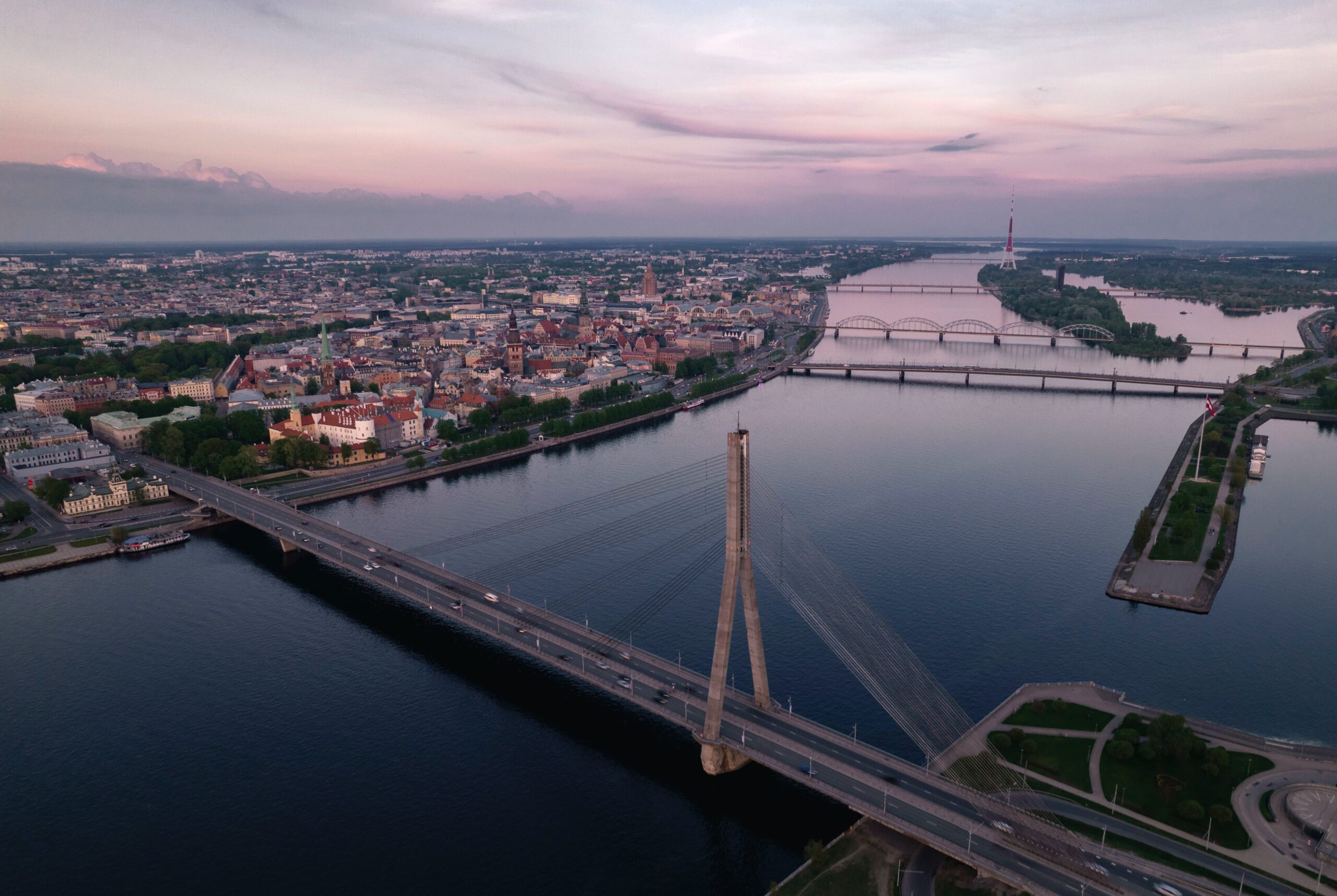Riga, the capital of Latvia, is an enchanting city offering a rich tapestry of history, culture, and architecture. With its blend of medieval and modern attractions, the city is a must-visit destination for every globe-trotter. This guide will lead you through the city’s hidden gems and famed landmarks, ensuring you experience the best of Riga.
Unravel the Mystery of Riga’s Old Town
Riga’s Old Town, known as ‘Vecrīga’, is the historical and geographical heart of the city. Wander through the winding cobblestone streets and marvel at the eclectic array of architectural styles, ranging from Gothic to Art Nouveau.
House of the Blackheads: A Gothic Marvel
A pivotal point in Riga’s Old Town is the House of the Blackheads. This 14th-century edifice was originally a meeting place for merchants and shipowners. Its ornate facade, featuring intricately carved stone statues, is a testament to the craftsmanship of the time.
Riga Cathedral: An Architectural Symphony
The Riga Cathedral, dating back to 1211, is a magnificent mix of architectural styles. Its Romanesque beginnings evolved into Gothic, and later, Baroque and Art Nouveau elements were added. The grandiose organ, with 6768 pipes, offers unforgettable musical performances. It’s a silent witness to the city’s history, an architectural marvel that has withstood the test of time, and an integral part of Riga’s cultural and artistic landscape.

Founded in 1211, Riga Cathedral is the oldest religious edifice in the Baltic States. Its enduring presence attests to Riga’s rich past, marked by varying rulers and changing cultural influences. The Cathedral’s architecture mirrors these shifts, presenting a remarkable fusion of Romanesque, Gothic, Baroque, and Art Nouveau styles.
The Romanesque traces are visible in the Cathedral’s nave and the small absidioles, reflecting the architectural preferences of the time. As the centuries passed, the Gothic style began to influence the Cathedral’s structure, with the choir and the vestry manifesting this evolution. Later additions in the Baroque and Art Nouveau styles have contributed to the building’s unique architectural ensemble.
The Cathedral’s Exterior and Interior
The Cathedral’s exterior, marked by a towering steeple and robust walls, exudes a sense of strength and solidity. The rose window, a classic feature of Gothic architecture, adds an element of elegance to the austere stone facade.
Inside, the Cathedral captivates visitors with its grandeur. The lofty vaulted ceilings, punctuated by robust columns, create a sense of vastness. The intricate stone carvings and stained-glass windows add layers of aesthetic richness.
One of the Cathedral’s highlights is the impressive organ. Built in 1884 by E.F. Walcker & Co, this musical instrument is one of the biggest of its kind in the world, boasting 6768 pipes. The organ’s exceptional acoustics make the Cathedral a sought-after venue for concerts, with its music resonating throughout the expansive interior and captivating audiences with its harmonious symphony.
The Cathedral’s Role in Riga’s Society
Beyond its architectural grandeur, Riga Cathedral plays a vital role in the city’s cultural and social life. It’s a hub for religious ceremonies and a stage for concerts, but it’s also a place where the community gathers, fostering a sense of unity and shared heritage.
Art Nouveau: Riga’s Architectural Crown Jewel
Riga is a veritable playground for lovers of Art Nouveau. This architectural style flourished in the early 20th century, leaving an indelible mark on the city’s landscape. Alberta Street is a notable example, boasting an array of beautiful buildings.
The Quiet Splendor of Alberta Street
Alberta Street, named after Bishop Albert who founded Riga, is an Art Nouveau masterpiece. Each building is a canvas, with facades adorned with ornamental sculptures, intricate ironwork, and stained glass. Take a stroll and let the architectural grandeur captivate you.
Delve into Riga’s Rich History at the Latvian National Museum of Art
The Latvian National Museum of Art is the perfect place to delve into the country’s artistic heritage. Its collections span several centuries, featuring works from the Baltics and beyond.
Artistic Evolution: A Journey through Time
The museum’s collection is a visual narration of Latvia’s artistic evolution. From Classicism to Modernism, each piece tells a unique story, reflecting the socio-political changes of the times.
A Taste of Riga: Savor the Local Cuisine
Food is a profound expression of culture, and in Riga, you’ll find a delightful mix of traditional Latvian cuisine and modern gastronomic trends.
Central Market: A Foodie’s Paradise
Riga Central Market, one of Europe’s largest marketplaces, is a sensory overload. With over 3000 trade stands selling fresh produce, local specialties, and exotic delicacies, it’s a must-visit for every food lover.
Conclusion: Best things to do in Riga – a Symphony of Experiences
Riga, Latvia, is a city that never ceases to amaze. Its captivating history, architectural grandeur, and culinary delights combine to create a symphony of unforgettable experiences.
Whether you’re a history buff, an architecture enthusiast, or a foodie, Riga has something to offer you. Embark on this journey and let Riga’s charm sweep you off your feet.

